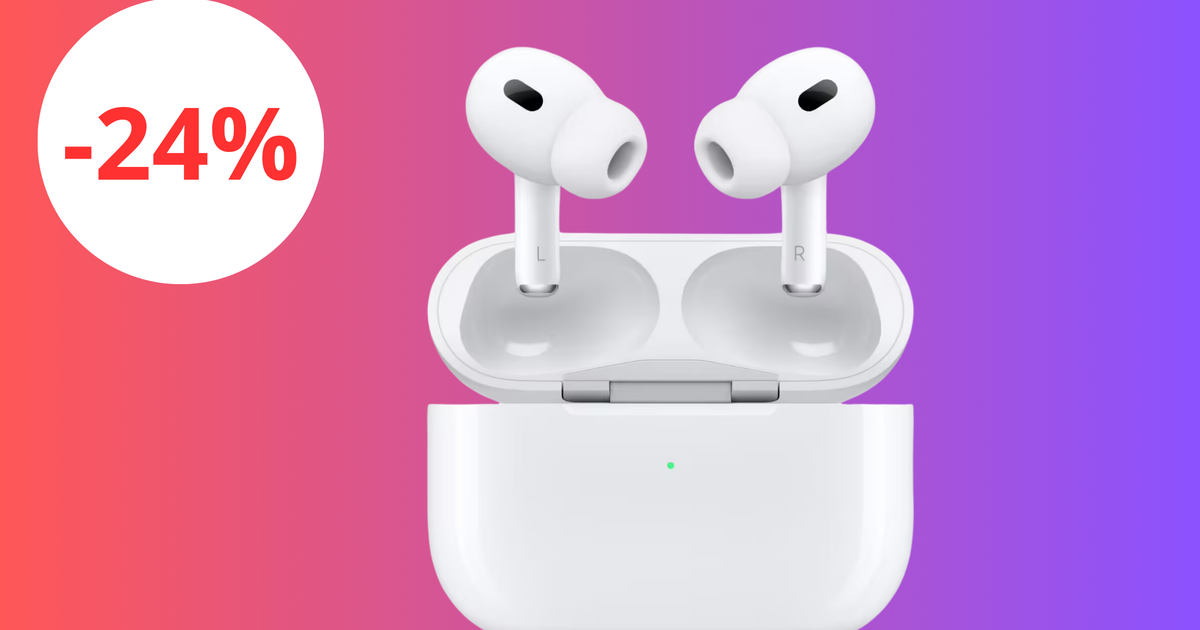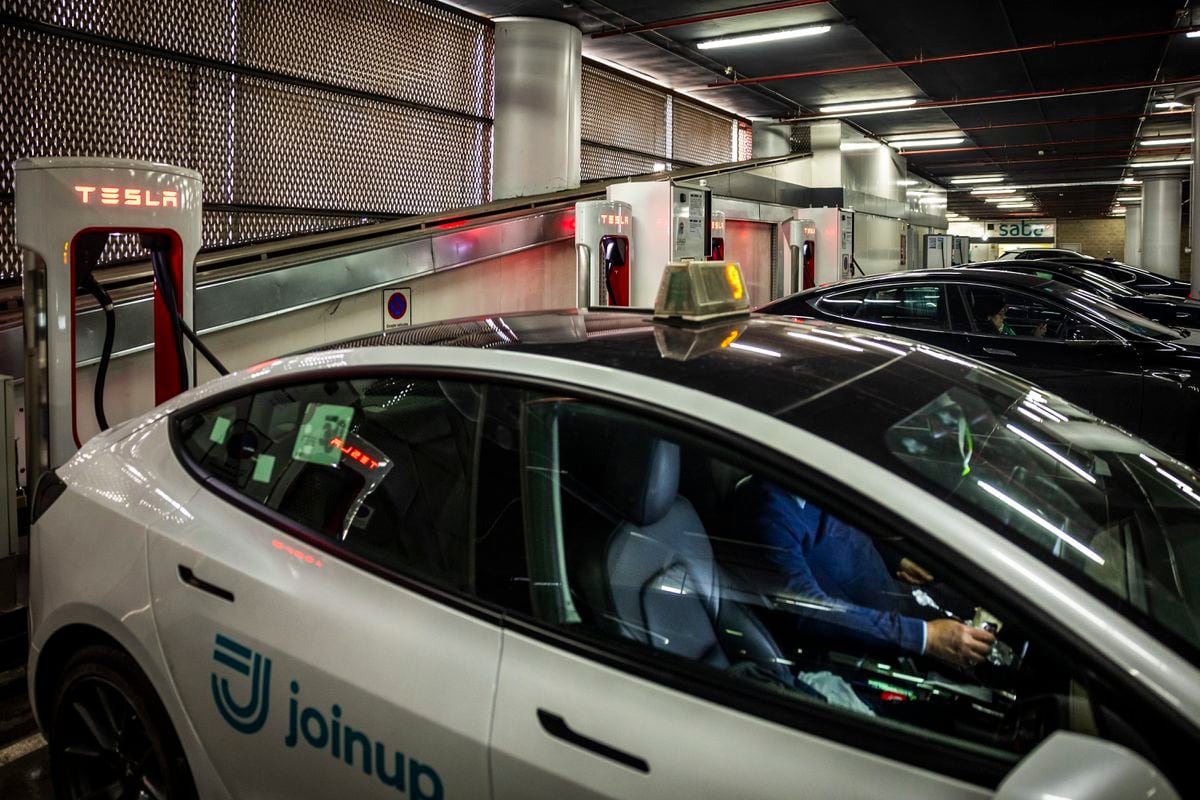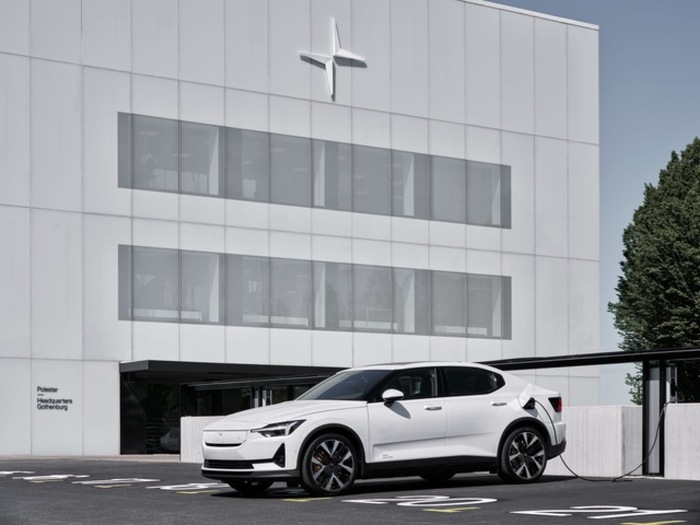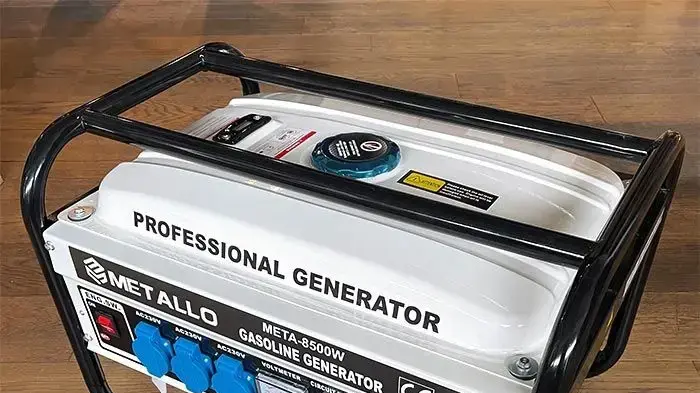Icon: enlarge
Some of the chargers tested
Photo: Techstage
Many Android smartphones, the current iPhones, some smartwatches, headphones and even some PC mice now support the Qi standard, which enables their batteries to be charged wirelessly.
This is convenient and practical, after all, there is no annoying plugging in a cable.
Instead, you simply place the devices on a Qi-compatible charging station.
No matter on the desk or bedside table: once you get used to it, you don't want to be without this technology anymore.
disadvantage
A major disadvantage of Qi charging technology is its lower level of efficiency compared to wired chargers.
It can only be done faster if you break away from the standard.
Smartphone manufacturers such as Oppo and Realme achieve in-house variants of wireless charging technology far faster than Qi devices.
In addition, protective covers can reduce efficiency because they increase the distance between the charging station and smartphone.
In the worst case scenario, a smartphone can even refuse to absorb energy altogether.
This also applies to handles such as the popular Popsockets and glued-on metal plates for fastening in the car.
Purchase criteria
First of all, you should be clear about whether the smartphone should be standing or lying down while charging.
The standing variants have the advantage that you can read the screen when charging.
Such Qi stations can usually also charge smartphones in landscape mode, i.e. lying horizontally.
This is useful for watching videos, for example.
The flat lying variants are more space-saving.
But there are also lying Qi chargers that you can set up if you wish.
If you have more than one Qi-compatible device, you will find charging systems that can charge several devices at the same time, for example iPhone, AirPods.
Then there are also factors that are not so obvious at first, but can be annoying in everyday life.
Some Qi chargers have bright status LEDs that are annoying in the bedroom.
Others turn out to be dust magnets.
And a few uncomfortable squeaking noises during operation.
Another important criterion is the speed at which the induction field of the charging pad charges smartphones.
For this, the manufacturers usually state the maximum power of their chargers in watts.
But be careful: Our test shows that this is often window dressing and does not necessarily affect the actual loading speed.
Either way, you have to be aware that power transmission via cable is faster and more efficient than without it.
Last but not least, the price of the Qi charging station is an important factor in the purchase decision.
Our test shows that expensive does not necessarily have to be better.
One of the fastest and most flexible Qi chargers is one of the cheapest.
In return, the most expensive Qi charger ends up in one of the back seats.
Test setup
The most important criterion of a Qi charger is first of all how fast it actually charges a smartphone.
To do this, we put a Google Pixel 4, a Samsung Galaxy S20 Ultra and an iPhone XR each on the Qi charging stations for 30 minutes.
Since 2021, we have been using an iPhone 12 mini instead of the iPhone XR for the tests, which supports wireless charging power of a maximum of 12 watts.
The battery level display is always between 30 and 70 percent.
The charging time of 30 minutes cannot be extrapolated 1: 1 to the total charging time of a smartphone.
Nevertheless, it gives a useful reference point for evaluating the performance of the Qi chargers.
Among other things, the brand of the phone is important.
For example, there is a Qi charging station specially tailored to the Huawei P40, which is supposed to charge it wirelessly with an output of 40 watts.
In addition, we measure the power consumption in watts both in standby and while charging.
The exact values can be found in this table on »techstage.de«.
The test has shown that for fast energy transfer it is important to position the smartphone perfectly on the Qi charging station.
A deviation of just a few millimeters can negatively affect the charging speed.
In the case of Qi chargers with multiple coils, this is put into perspective a little.
The test results at a glance:
Aukey Aircore Series 2-in-1 Up Arrow Down Arrow
The Aukey Aircore Series 2-in-1 is one of the inexpensive Qi charging stations that can supply two devices with energy at the same time.
The charger, which is in matt black or white, has a modular structure.
The holding device for the smartphone is in a base part, connected via USB-C.
This means that the Qi charger works via USB-C even without a base part.
So you can convert the standing charging station to a horizontal one.
A power supply unit is not included.
We recommend a high-quality model with USB-PD for around 20 euros.
In the charging test, the Aukey Aircore Series 2-in-1 surprised with a consistently high charging current.
The iPhone 12 Mini even charges it with a record-breaking 13 watts.
However, the positioning of the charging coil of the iPhone 12 mini does not match the Qi charging station; Aukey warns of this and states that it is not compatible.
Aukey Aircore Series 3-in-1 Up Arrow Down Arrow
The Aukey Aircore Series 3-in-1 Qi charger is largely identical to the Aukey Aircore Series 2-in-1.
The main charging station for the smartphone is identical.
Therefore, it shines with the same high charging current.
It is also just as modular and just as unsuitable for the iPhone 12 mini.
Basically, it's just a 2-in-1 charging station.
However, it does come with a device into which an existing Apple Qi charger can be integrated.
This is solved very nicely with the USB-A port and magnetic cover on the underside.
Thanks to this trick, the charging station manages to stay cheap.
Belkin Boostcharge Truefreedom Pro Up arrow Down arrow
The Belkin Boostcharge Truefreedom Pro is one of the most expensive Qi chargers in the comparison test at around 120 euros.
Thanks to the high weight and the metal frame, it looks very valuable.
It comes with a 30 watt power adapter.
According to Belkin, there are two charging areas on it that can each transfer 10 watts.
In fact, Belkin has positioned the charging coils sensibly.
As a user, you don't have to worry about how the phone is lying on it, it charges almost always.
Belkin writes that the charging station is not compatible with the iPhone 12 mini.
We cannot confirm that in the test, the iPhone 12 mini also charges without any problems and very quickly.
Belkin Boostup Wireless Charging Dock Up Arrow Down Arrow
Icon: enlargePhoto: Techstage
The Belkin Boostup Wireless Charging Dock is one of the most expensive Qi charging stations in the comparison test.
It is tailored to Apple users, as it can charge another Qi device such as the Apple AirPods and an Apple Watch in addition to a smartphone.
Its power supply is sufficiently large for this with 45 watts.
In the test, it charges the iPhone XR and the S20 Ultra slightly faster than average.
Belkin Boostup Wireless Charging Stand Up Arrow Down Arrow
Icon: enlargePhoto: Techstage
The Belkin Boostup Wireless Charging Stand charges the smartphone in portrait or landscape format and is largely made of matt plastic.
It stands stable on a large foot and holds the smartphone reliably in position thanks to a rubber coating.
The Belkin Boostup Wireless Charging Stand is comparatively cheap and offers average performance.
There is no power supply included.
Celluarline Wireless Fast Charger Dual Up arrow Down arrow
Icon: enlargePhoto: Techstage
The Celluarline Wireless Fast Charger Dual is one of the slimmest Qi chargers with a height of just 0.7 centimeters.
It stands on a metal plate, its top is made of a black, matt plastic, on which two charging pads sit.
A round rubber mat protects the smartphone from slipping.
Unfortunately, the rubber coating is a real dust magnet and looks dirty after a very short time.
When it comes to wireless charging of the Pixel 4 and the iPhone XR, it is one of the slower representatives.
With the Samsung S20 Ultra, on the other hand, there is really gas.
Google Pixel Stand Up Arrow Down Arrow
Icon: enlargePhoto: Techstage
The Pixel Stand from Google is remarkably high-quality.
Almost its entire surface is made of a matt, slightly rubberized plastic that is great to the touch.
Unsurprisingly, it charges the Pixel 4 particularly quickly, while Samsung and Apple only achieve average charging speeds.
The pixel recognizes the Qi charger from its own house and offers additional functions such as a light alarm clock with it.
Accordingly, the Pixel Stand is particularly suitable for Pixel users, but could put off many with its high price of 65 euros.
Greencell Airjuice Up Arrow Down Arrow
Icon: enlargePhoto: Techstage
The Greencell Airjuice is one of the most inconspicuous Qi chargers in our test.
It is small, quite heavy thanks to a lot of metal, black and above all extremely flat.
The charging performance, which is in the lower range for all three models, is also inconspicuous.
A small green LED lights up on its front when charging.
This could bother some buyers who have the Qi charger on the bedside table while sleeping.
Huawei Wireless Charger Supercharge Up Arrow Down Arrow
Icon: enlargePhoto: Techstage
The Huawei Wireless Charger Supercharge is small with a diameter of 8.5 centimeters, but quite high at 1.4 centimeters.
It comes with a white, rubberized surface that protects the smartphone from slipping, but at the same time attracts lint that is difficult to remove again.
The included power adapter is one of the strongest in the comparison test with 40 watts.
The Qi charger itself should deliver 15 watts.
At least with the Pixel 4, Galaxy S20 Ultra and the iPhone XR, no more of it arrives than with other Qi chargers that deliver fewer watts in numerical terms.
However, a short test on the Huawei P40 shows that it is significantly faster on devices of its own brand.
Kingston HyperX Chargeplay Base Up Arrow Down Arrow
Icon: enlargePhoto: Techstage
The Kingston HyperX Chargeplay Base addresses gamers with its slightly playful, curved shape.
This is also evident from the elongated LED that lights up continuously when devices are being charged.
That may look nice when playing in front of the monitor, but it disqualifies it as a Qi charging station next to the bed.
In addition to a smartphone, it can charge another Qi device.
In the test, it charged the Pixel 4 rather slowly, the iPhone XR quite quickly and the Samsung S20 Ultra really quickly.
Lotta Power Wireless Charging Pad Up Arrow Down Arrow
Icon: enlargePhoto: Techstage
The Lotta Power Wireless Charging Pad is available in pink, gray and gold colors.
A nice detail: the charging cable is also kept in the respective color.
Its surface is covered with fabric.
The charging pad itself is quite small and flat, the underside is rubberized so that it does not slip.
The charging performance was below average in the test.
Unfortunately, the device beeps slightly when in use.
In return, its price of around 19 euros is acceptable.
Nokia DT-900 Up Arrow Down Arrow
Icon: enlargePhoto: Techstage
The Nokia DT-900 is relatively small, very yellow and lies flat on the table.
A narrow rubber ring surrounds the Nokia logo in the middle.
The power supply only has an output of 9 watts, but it is still in the midfield in terms of its power transfer.
It is one of the oldest in the test field and is now much cheaper than when it was first introduced.
Nomad Base Station Up Arrow Down Arrow
Icon: enlargePhoto: Techstage
The Nomad Base Station stands out with its excellent workmanship.
It consists largely of metal, and its contact surface is made of high-quality synthetic leather.
Dirt and dust do not stick to it.
It is designed to charge two devices horizontally, such as an iPhone and the Apple AirPods.
In addition, the base station has a USB-C and USB-A port on the back for charging additional devices.
In the test, it charged the Pixel 4 and the S20 Ultra quickly.
When it comes to the iPhone XR, she takes the lead, albeit just a little.
Pitaka 6-in-1 Air Omni Up arrow Down arrow
Icon: enlargePhoto: Techstage
The Pitaka 6-in-1 Air Omni wants to be the ultimate Qi charging station for all Apple fans, but it could also find many fans among Android users.
It has a lying charging pad with three coils, a small charging pad for headphones, a fold-up charging pad for the Apple Watch and a stand with a Lightning connector and USB-C connector for older iPads, Android tablets and Android devices. Smartphones.
In addition, the Air Omni has a USB-A and a USB-C port to charge other devices via cable.
The included power supply delivers 64 watts.
This is probably one of the reasons why the Air Omni is the only Qi charging station in the test that charges all three smartphones at an above-average rate.
Pitaka can pay dearly for this ability.
The device costs a full 170 euros on Amazon.
In return, buyers receive a very good and universally usable charging station, which we also liked in terms of its workmanship.
PNY Dual Charger Up Arrow Down Arrow
The PNY Dual Charger is one of the nicest in the comparison test.
It is light, thin and covered with a chic gray fabric.
The charging surfaces are marked with crosses made of rubber fingers, which at the same time ensure that the smartphone being charged does not slip.
It comes with a 30 watt power supply.
According to PNY, each loading area transmits up to 10 watts.
In the test it showed its strengths especially in connection with an iPhone 12 mini, here it creates a charging current of almost 11 watts.
Samsung Wireless Charger Stand Up arrow Down arrow
Icon: enlargePhoto: Techstage
The Samsung Wireless Charger Stand is a comparatively inexpensive Qi charger at around 35 euros, which is supposed to charge Samsung smartphones quickly.
It does, as our test shows.
The real surprise, however, is that it charges our iPhone XR as quickly as otherwise only the much more expensive Pitaka Air Omni.
Since the workmanship is also at a high level, the Samsung Wireless Charger Stand receives our purchase recommendation - ironically, especially for iPhone XR users.
Samsung Wireless Charger Duo Up arrow Down arrow
Icon: enlargePhoto: Techstage
The Samsung Wireless Charger Duo is a drilled-out variant of the Samsung Wireless Charger Stand presented above. It expands the standing Qi charging area by another horizontal one.
Its price is comparatively high at 90 euros.
It charges the Samsung S20 Ultra very quickly on both Qi surfaces, while the Google Pixel 4 and iPhone XR are slow.
The latter in particular surprises us, as the significantly cheaper Samsung Wireless Charger Stand is one of the very few Qi chargers that also charges the iPhone really quickly.
In addition, it is significantly cheaper than the Samsung Wireless Charger Duo.
Spigen Steadiboost Flex Up arrow Down arrow
Icon: enlargePhoto: Techstage
The Spigen Steadyboost Flex is one of the cheaper Qi chargers and yet one of the fastest in the test with all three smartphones.
It looks appropriately processed and comes with an 18 watt power adapter.
One advantage is that the user can use it lying down and standing.
On the other hand, its power consumption in standby is comparatively high for a single charge device with 0.6 watts.
Varta Fast Wireless Charger Up Arrow Down Arrow
Icon: enlargePhoto: Techstage
The Varta Fast Wireless Charger shows an average value in terms of its performance for both the Pixel 4 and the iPhone XR.
When charging the S20 Ultra, on the other hand, it surprises with a particularly high performance.
Nevertheless, it is by far the cheapest device in our test series
It can be set up flexibly either lying down, upright or standing horizontally.
The base is made of metal and sticks magnetically to the back of the Qi charger during transport.
Xiaomi 20W Wireless Charger Up Arrow Down Arrow
Icon: enlargePhoto: Techstage
The Xiaomi 20W Wireless Charger looks similar to the Huawei Qi charger, but is larger with a diameter of 10 centimeters and a height of 2 centimeters.
According to Xiaomi, it has an output of 20 watts;
a 27-watt power supply is included.
In the test, however, it did not charge the Pixel 4, S20 Ultra and the iPhone XR much faster than, for example, the Nokia DT-900, whose power supply only delivers 9 watts.
To counteract overheating, Xiaomi installs an active fan in its charger.
This can be annoying, especially when charging in the bedroom.
XLayer Wireless Charger Desktop Up Arrow Down Arrow
Icon: enlargePhoto: Techstage
The XLayer Wireless Charger Desktop looks chic: its front is protected by a gray fabric, it is pleasantly flat and the feet on its back are made of metal.
However, we cannot recommend it to everyone.
The charging performance of the three test smartphones is even slightly above average.
We complain, however, that the XLayer Wireless Charger Desktop beeps unpleasantly when it is not charging a smartphone.
The brightly lit XLayer logo on the front is also annoying.
Both of these disqualify this device from being used next to the bed.
Conclusion
The Pitaka 6-in-1 Omni Air Qi charger, the most expensive at 170 euros, came first in the comparison test.
This is due to its good workmanship, high flexibility and very high loading speeds.
Nevertheless, the price of a Qi charger is not necessarily directly related to its power transfer.
The Spigen Steadiboost Flex, for example, charges the Pixel 4 particularly quickly, but is priced in the lower segment.
It is particularly surprising how quickly the Varta Fast Wireless Charger charges the Galaxy S20 Ultra, even though it is the cheapest Qi charger in the comparison test.
On the other hand, the Belkin Boostup Wireless Charging Dock is one of the most expensive devices, but it doesn't deliver particularly high performance.
more on the subject
Dispute over technical devices: which is the connector of the future?
Air Omni charging station put to the test: six in one goBy Matthias Kremp
Practical test: USB-C charging cable in comparisonBy Andreas Brohme
Practical test: iPhone charging cables in comparisonBy Andreas Brohme
You shouldn't pay too much attention to the manufacturer's watt information.
On paper, the Xiaomi 20W Wireless Charger is the strongest in the test field, but it cannot charge the Google Pixel 4, the Samsung Galaxy S20 Ultra and the iPhone XR faster than the Belkin Boostup Wireless Charging Stand with 5 watts.
Buyers usually have to decide in advance whether the Qi charger should charge the smartphone lying down or standing.
Not so with the Spigen Steadiboost Flex and the Varta Fast Wireless Charge, which master both positions.
In terms of optics and workmanship, the Nomad Base Station stands out positively.
If the Qi charger is supposed to charge next to the bed at night, a permanently lit LED interferes, as with the Kingston HyperX Chargeplay Base.
Devices such as the Huawei Wireless Charger Supercharge and the Celluarline Wireless Fast Charger Dual also prove to be sensitive to dirt.









